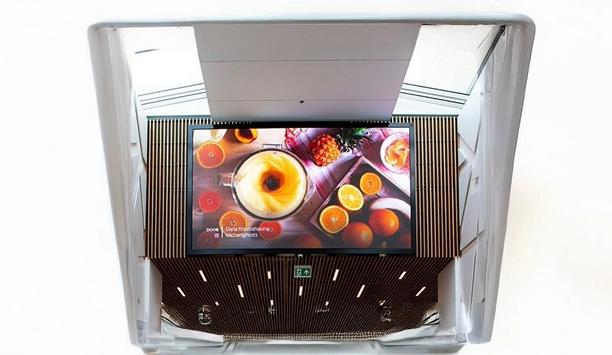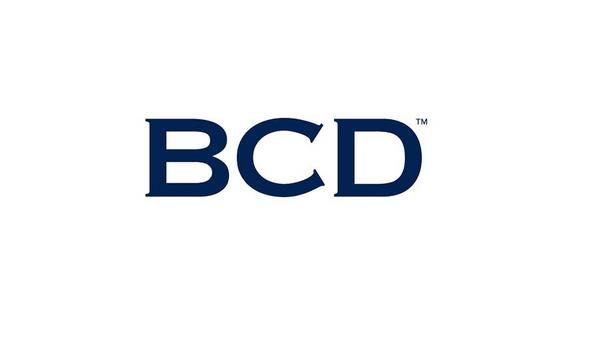Paving the way for flexibility
The foundation of the system goes back to an investment decision made in 2008. Back then the hospital changed from the outdated old system in a migration process to Nedap AEOS. This comprehensive software-driven platform manages all the security requirements of one or many buildings. As well as access control, this includes identity and authorisation management, IP video management and intrusion detection. Add to that the supervision and reporting with web-based alarm administration via a web-based, system-independent graphic interface. The Salto's off-line system has been fully integrated into the AEOS security management platform and thereby enables the homogeneous administration of all components, people and functions. AEOS manages a total of 1,580 off-line lock systems. It manages all online doors and online functions, the access doors, the off-line lock system, room doors, patient cabinets and containers, employee cupboards as well as mobile care and food trolleys. New cards including photos are issued using the AEOS software. An ID card can be created on the card printer for every data record in the system and assigned to the corresponding person.
People instead of ID carriers
A particular advantage of the AEOS platform lies in the fact that it is not based on ID carriers but people. The difference is immediately noticeable, for example, if a card is lost. The entire employee record must not be re-entered in the system just because a persons’ identification number is missing.
‘This particular criteria can be the deciding factor when choosing the system, above all if there are numerous locations at which the ID features must be distinguished‘, says Dietmar Vetten of GST. This fact permits the issue of multiple identification devices per person. For example, some people have two ID cards in one, that are valid in different hospitals. The cards replace the previously common bunches of keys. They don‘t just open doors and cabinets. Also, the elevator can be controlled with them. Meanwhile long-range readers have been installed near the elevators: these recognise when a bed is moved close to the elevator and permit priority use. The authorisation can also be organised differentially so that a priority usage is only available if a member of staff arrives with a bed. If he is alone he will be treated like every other member of staff.
Emergency door monitoring and canteen trolleys
‘Our emphasis is on the integration of our software because we have an open platform, therefore we work together with experienced partners on a long-term basis’ |
Applications of the security management system can be found everywhere. All doors that are on escape and rescue routes within the hospital are connected to AEOS. Alarms can now be alerted at a central point and forwarded, whereas they used to be raised by pressing an emergency button. The connection also prevents doors being opened without permission. If this happens an alarm is raised in AEOS so that the door can be closed again. An additional connection to the video surveillance system is also planned. The scope of the Nedap software reaches even as far as the catering service: the central food supply service is organised in this Mülheim hospital. The deep frozen food is delivered to the kitchen, divided into portions and stacked in the canteen trolleys. It is then thawed and carefully warmed up on the ward so that it doesn‘t arrive on the plates lukewarm, or even cold, because of the long transport distances. Each of these canteen trolleys has a transponder that automatically opens the door as it passes over the inductive loop in the floor directly below. In this way it is not necessary for a member of staff to manually open a door with their card and the kitchen remains accessible to authorised persons.
Central location – preferred parking
For shopping-lovers it is very practical to use the car park of the centrally located hospital, and so some employees had the idea of using their ID cards outside normal working hours. This is now prevented by a connection to the AEOS software, as Dietmar Vetten of GST explains: ‘The installer has fitted a card reader to the parking lot barrier that is connected to the AEOS system. This has saved having three separate proprietary parking management systems’. The parking spaces can be of ‚mixed‘ use according to an algorithm – that is, by visitors and by staff. The software shows the current occupancy status of each. If one of the staff park there too long an email is sent to the facility management personnel.
Although all the staff from the stand-by team has authorisation for the parking lot, only the person on duty can park there during his shift.
Optimum cooperation
With regard to the implementation of all these systems, no better praise can be given by the customer. This applies not only to the support by GST but also, as Georg Thies and Klaus Domscheit emphasise, for the ‘very good teamwork between Nedap and Salto’. The Salto striker portfolio, that has meanwhile been in use in the hospital for four years, provides an off-line product choice that is hard to beat. Good products alone are not decisive but also good communication within the triangle of manufacturer, installer and customer/user. As Axel Schmidt of Salto points out, this has already been tested ‘in hundreds of joint projects in Europe and worldwide’. During this time the cooperation has been optimised, as Christian Nagel of Nedap confirms: ‘Our emphasis is on the integration of our software because we have an open platform, therefore we work together with experienced partners on a long-term basis.’












